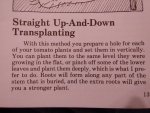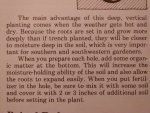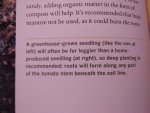What causes top roots anyway. Its gotta be temperature
Why don't tomatoes grow roots all the way down the stem? I don't know but I do know that some heirlooms have aerial roots so I must presume that it has something to do with either sunshine or temperature or both. Why waste the effort? I think it is a survival tool. Tomatoes were originally vines, not these hybridized versions we have today. Where ever a vine was touching the ground it would take root and grow until the next time. Just like air layering a fig tree.
I agree. I agree entirely. I agree so much because, to some extent, you're making my point.
Modern hybrids are still either bushes or vines, & still act in the same way.
So we are agreed that tomatoes can make roots anywhere along the stem if it is advantageous, but won't bother if it's not? You wrote, "Why waste the effort?"
In my view, this shows that the buried roots are defunct, as the tomato:
1) Cannot know that being buried deeper is a possibility.
2) Will make roots only in the top couple of inches, no matter how deep it is planted.
So if you bury a tomato, say 9 inches deeper than originally, then there will be a 7 inch gap between the new and the original surface roots, which will be 9-11 inches underground.
If, however, you were to bury your tomatoes 18 inches deeper than originally, (unlikely, but possible) it would still only grow roots in the top couple of inches, and leave a 16 inch gap to the original roots. IT WOULD NOT GROW A THIRD SET 9-11 INCHES UNDERGROUND, even though it could.
It logically follows that surface roots at 9-11 inches underground are useless, or it would. You wrote, "Why waste the effort."
Thus, by burying tomatoes deeper, it is you who is wasting the effort, by making the original roots useless and forcing the plant to grow a new set.
It also has a tap root in order to suck up water and nutrients from depth.





